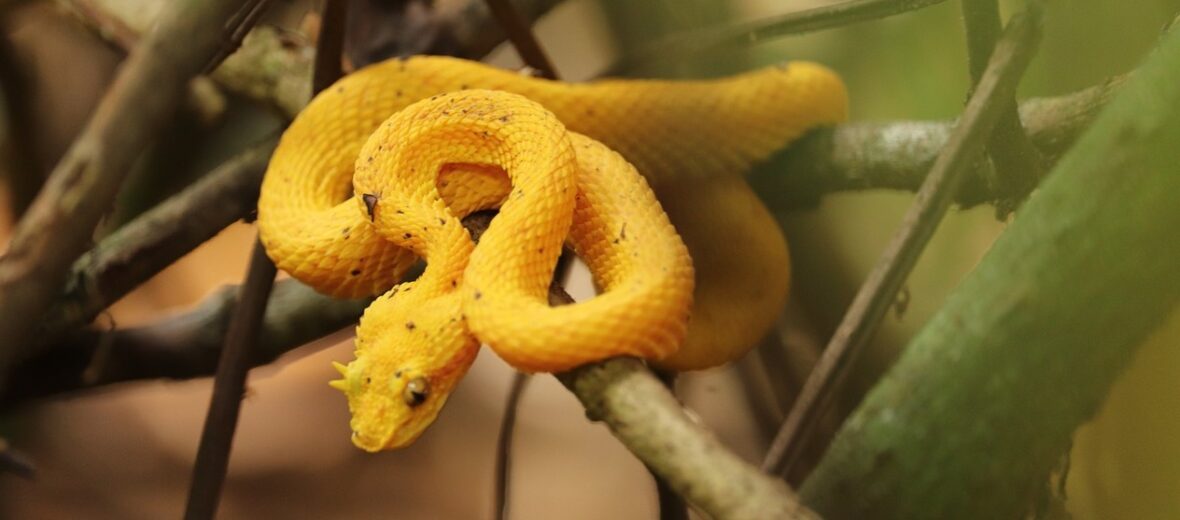
Not only is the eyelash viper fast (among the fastest strikes of any snake) but they can be deadly! They Range in color from red, yellow, pink, green, and brown – sometimes with specks of dark coloration, these snakes can blend in with their colorful environment and await their unsuspecting prey. While they are threatened by habitat loss at the hands of logging and agriculture, these snakes are listed as Least Concern by the IUCN.
First the Stats…
Scientific name: Bothriechis schlegelii
Weight: Up to 2+ lbs.
Length: Up to 3 feet
Lifespan: Up to 20+ years
Now on to the Facts!
1.) These vipers are nocturnal (active at night).
2.) The eyelash viper is arboreal (spend their life in trees).
3.) Like all pit vipers, these vipers have 2 pits on the frontal sides of its head. These pits are used to detect heat and assist with hunting its warm-blooded prey.
4.) This viper’s venom contains hemotoxins and neurotoxins, containing hemorrhagic and procoagulants compounds (this causes massive blood clotting). It affects both the cardiovascular system and the central nervous system, making it highly toxic, and sometimes fatal to humans. It also has a digestive enzyme which aids in the digestion of its prey.
5.) The natural enemies of eyelash viper include foxes, falcons, hedgehogs, badgers, cats, and larger snakes.
But wait, there’s more on the eyelash viper!
6.) These beautiful snakes have been mistakenly transported with banana shipments to other countries.
7.) Like other vipers, they are solitary and only come together to mate.
Did you know…?
With among the fastest strike of any viper, the venom of these snakes is hemotoxic (affects blood clotting) and can potentially kill a person. However, these snakes are relatively reluctant to bite and there is antivenom produced to counter the venom effects. Death is not likely in most cases. But the bite is quite painful.
8.) Just in time for migratory birds to show up each spring, these vipers have been known to take up residence in the same spot, year after year, to await passing birds.
9.) Similar to the spider-tailed horned viper, eyelash vipers engage in what is called caudal luring. This is where they will erratically wiggle their tail tip in order to entice a passing critter into striking distance.
10.) A group of snakes is called a bed, den, knot, nest, or pit.
Now a Short Eyelash Viper Video!
Want to suggest a critter for me to write about? Let me know here.




Leave a Reply